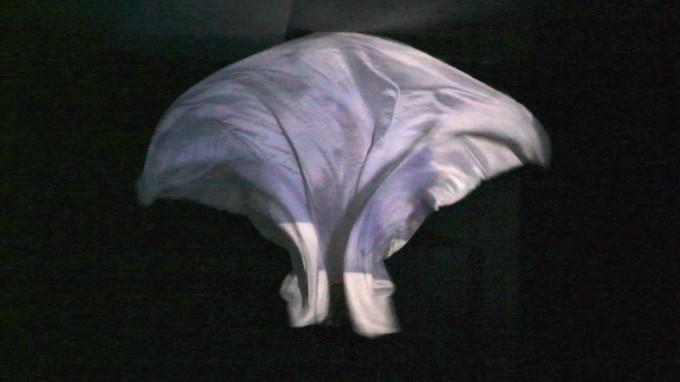By Oriena Vuong
The phenomenon that invented photography is the focus of Elena Malkova’s Camera Obscura, a new exhibition at the Ryerson Image Centre.
The gallery, which began on Wednesday, Nov. 6, takes its name from the “magical moment” of the camera obscura effect, which uses an optical device — as small as a box or as big as a home — to capture an image outside its walls and project it on its inner walls.
At the exhibit’s opening, Malkova, a recent Ryerson photography graduate, debuted two original films: Portraits, a video capturing people posing for a portrait reflected onto the inside of her home, and In the Light of the Camera Obscura, in which Malkova combines the elements of dance and photography through the use of camera obscura.
“If you minimize [camera obscura] to its basic structure…it’s so basic, it’s so natural,” says Malkova. “It’s some sort of optical phenomena. So it’s a natural thing to happen with light.”
Although Malkova says she can’t explain the physics of camera obscura, she was interested in capturing the “nature of the phenomena.”
The exhibit is showcased in a dark room. One side of the wall is largely dedicated to projecting Portraits, while In the Light of the Camera Obscura is projected through a small box in the corner of the room.
The film Portraits, which depicts people standing still outside while the world around them continues moving, is shot in such a way that the viewer is able to both see the projected image and, as the frame zooms out, realize that it’s being viewed on a wall in Malkova’s home. She explains that the reveal at the end allows viewers to understand the workings of the camera obscura effect.
“One of the main points of that piece is education,” she said. “If a person has never made the camera obscura or faced it live…you don’t really know what it is.”
In the Light of the Camera Obscura, meanwhile, is displayed in a box stand where viewers can see “two different reflections” of a person dancing.
“I was interested in recording something more visually rich with the camera obscura effect,” says Malkova, citing modern dance pioneer Loïe Fuller as an influence. The box was made to look like a theatre in reference to Fuller’s theatrical background in her renowned Serpentine Dance.
“It was interesting because Fuller’s dance was around 50 years after the first photograph was invented. The majority of artists were into visual development experiments during that time,” says Malkova. “So I feel like those were two very good ideas to combine.”










Leave a Reply